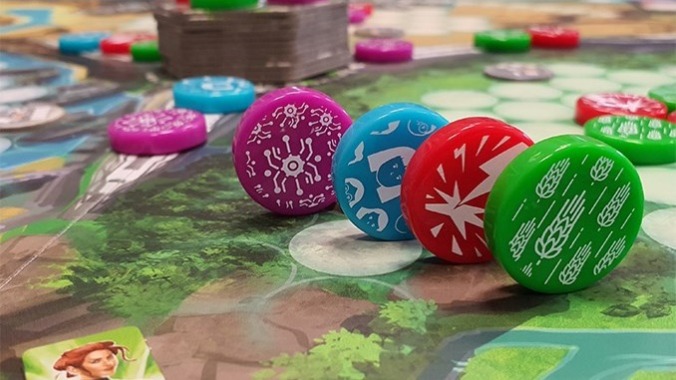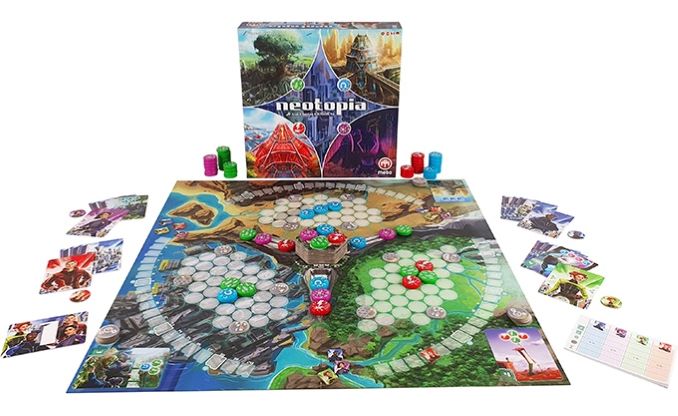Neotopia Is a Mash-up of Mechanics Done Better in Other Board Games

Neotopia is an easy-to-learn, abstract game of laying tiles to match patterns on your hand cards, but it doesn’t bring anything new to the table, and ends up as a light game of glorified solitaire. I found it mildly engaging, but it reminded me too much of other games that have similar mechanics or concepts but execute them in better ways.
Neotopia has a flimsy theme of players trying to build a new city in the distant future on earth, but it’s really quite disconnected from the game play itself—you don’t need to read any of the text describing the theme to understand the game on any level. There are tokens in four colors, matching the four possible player colors, that you’ll place on the board in any of the three ‘city’ regions. In between any two regions is a ‘factory’ that can contain up to four tokens, the colors of which will vary over the game, and that can only be moved into an adjacent region. Each player starts the game with three hand cards showing patterns of tokens that, once matched on the board, are worth 2 to 5 points. You also score points at game-end for the largest contiguous cluster of tokens in your color in each of the three cities.
There are two possible actions to take in Neotopia, and on your turn, you take three actions in total, in any combination you like. One is to take a pattern card, either taking one from the four face-up options or to take the face-down card on top of the deck. The other is to move a token from a factory into either of the two adjacent regions. You can take a token from either neighboring factory, and must place it either next to any token already in the region or, if the region is empty, on the center space. (This can only happen in a two-player game.) If placing a token completes a pattern that matches any of your cards, you score the card immediately as a free action. You can only score a card by placing a token, though—you can’t score for a pattern that’s already there, or that someone else completed, eliminating the quirk in many games (like Ticket to Ride) where you can draw a card and get its points for ‘free.’ When you score a pattern, you gain points on that region’s scoring track, so you will get three separate region scores in the game.
-

-

-

-

-

-

-

-

-

-

-

-

-

-

-

-

-

-

-

-

-

-

-

-

-

-

-

-

-

-

-

-

-

-

-

-

-

-

-

-









































